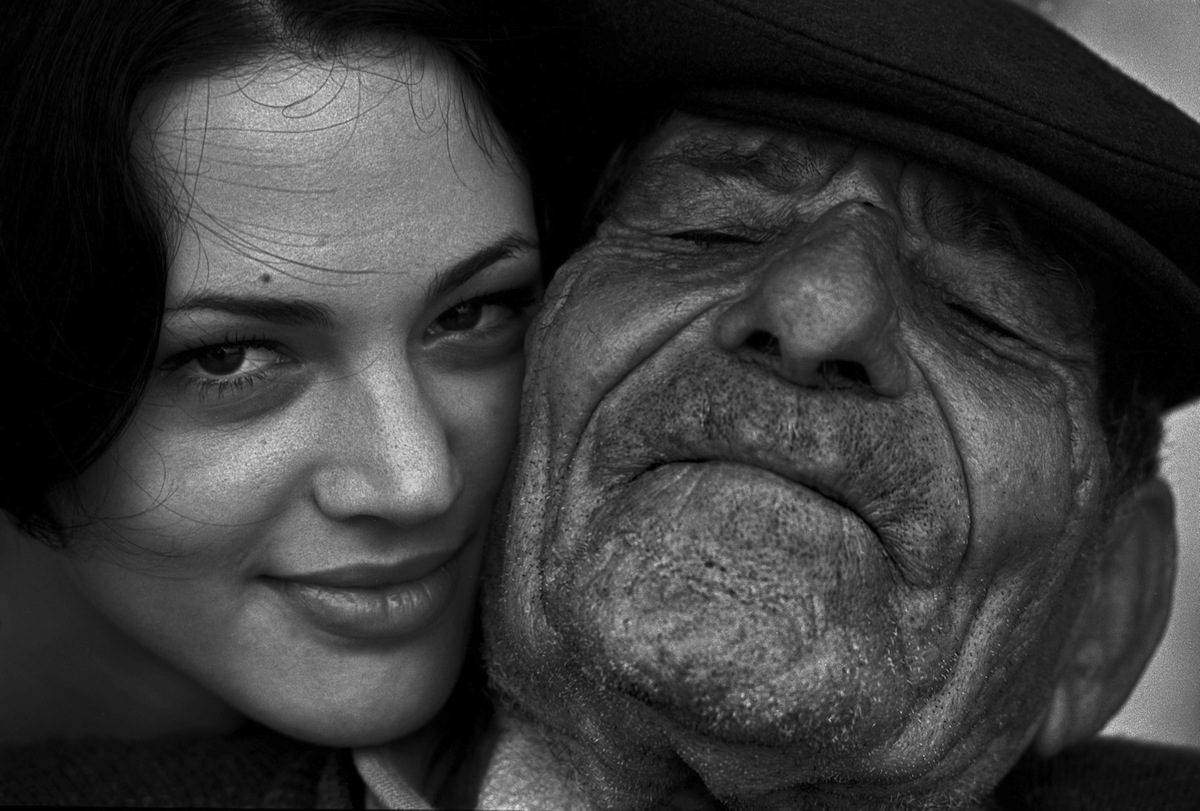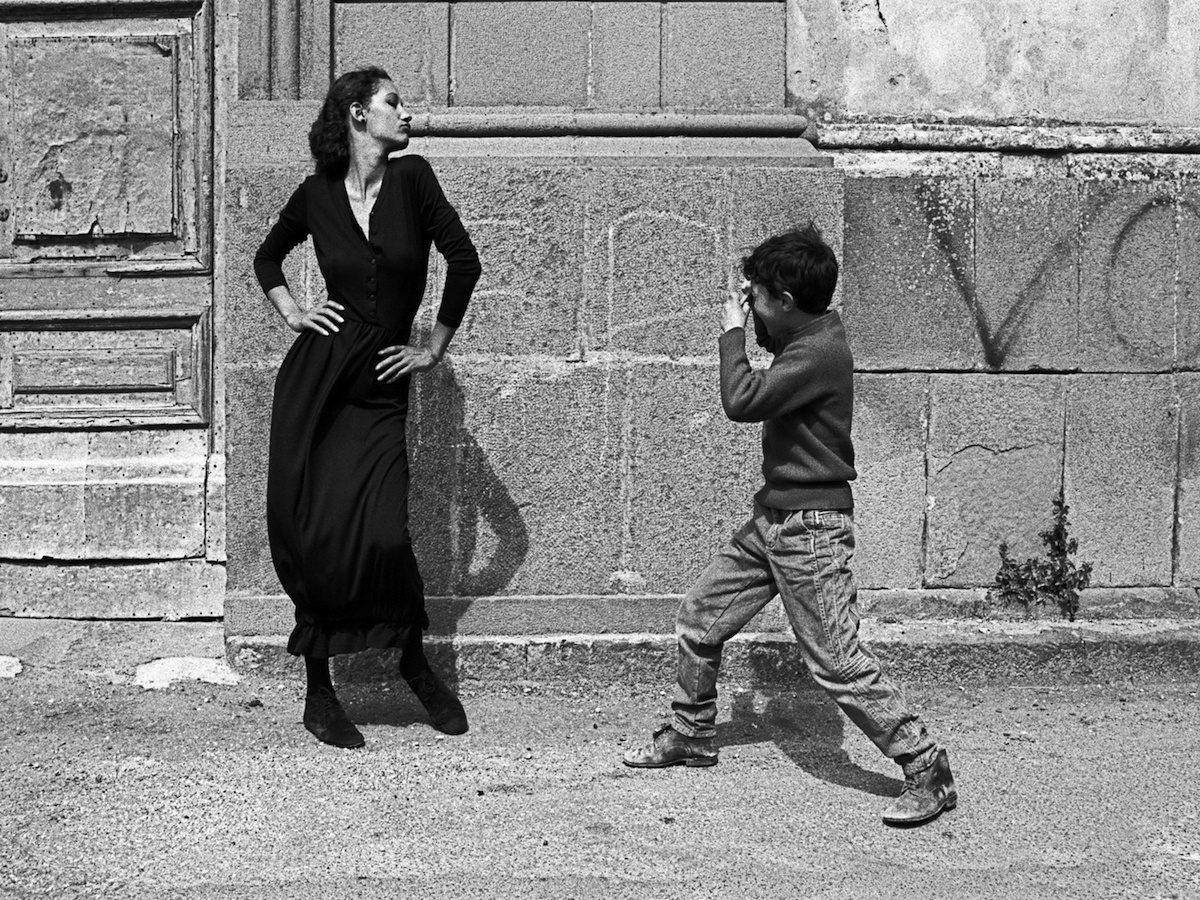Ferdinando Scianna
street photographer
EN – Ferdinando Scianna (Bagheria, July 4, 1943) is an Italian photographer.
He enrolled at the Faculty of Humanities at the University of Palermo, where he will follow different courses without completing his studies. In 1963, Leonardo Sciascia visit almost by chance his first photographic exhibition, whose theme is the popular festivals, at the cultural center of Bagheria. Ferdinando Scianna
When they meet in person, born immediately friendship that will be critical to the career of Scianna.
Sciascia takes part in with a preface and texts to writing his first book, Religious Festivals in Sicily, which won him the prize Nadar in 1966. He moved to Milan in 1967 and within a year he worked as a photojournalist and special correspondent with the European, becoming later the Paris correspondent. Ferdinando Scianna
In 1977 the public in France Les Siciliens (Denoel), with texts by Dominique Fernandez and Leonardo Sciascia, and in Italy The villa of the monsters (introduction of Leonardo Sciascia). Ferdinando Scianna
In Paris writes for Le Monde Diplomatique and La Quinzaine littéraire and especially knows Henri Cartier-Bresson, whose work had influenced him since his youth.
The great photographer will introduce it in 1982 as the first and only Italian photographer in the prestigious international photo agency, Magnum Photos, which will become a full member in 1989.
In 1984 he collaborated with Bresson and André de Pieyre Mandiargues by Henri Cartier-Bresson: portraits (Collins) .
Meanwhile became friends and collaborated with various successful writers, among them Manuel Vázquez Montalbán (which some years later wrote the introduction of forms of chaos, 1989).
In the eighties, he also works in high fashion and advertising, establishing itself as one of the most requested photographers.
Provides an essential contribution to the success of the campaigns of Dolce and Gabbana of the second half of the eighties.
In 1995, he returned to face the religious themes, publishing trip to Lourdes, and in 1999 are published portraits of the famous Argentine writer Jorge Luis Borges. Ferdinando Scianna
2003 sees the release of the book Those of Bagheria (part of a larger project that includes a documentary and various exhibitions), reconstruction of the setting and the atmosphere of his youth through a search in the individual and collective memory.
In December 2006 he was presented the 2007 calendar of Nebrodi Park, with twelve shots of the actress Maria Grazia Cucinotta.
With countryman Giuseppe Tornatore, on the occasion of his new film Baaria, published in 2009, the photo book Baaria Bagheria.
Italiano
IT – Ferdinando Scianna (Bagheria, 4 luglio 1943) è un fotografo italiano.
Si iscrive alla Facolta di Lettere e Filosofia presso l’Università di Palermo, dove seguirà diversi corsi senza tuttavia portare a termine gli studi. Nel 1963 Leonardo Sciascia visita quasi per caso la sua prima mostra fotografica, che ha per tema le feste popolari, presso il circolo culturale di Bagheria.
Quando s’incontrano di persona, nasce immediatamente un’amicizia che sarà fondamentale per la carriera di Scianna.
Sciascia partecipa infatti con prefazione e testi alla stesura del suo primo libro, Feste religiose in Sicilia, che gli fa vincere il premio Nadar nel 1966. Si trasferisce a Milano nel 1967 ed entro un anno inizia a collaborare come fotoreporter e inviato speciale con l’Europeo, diventandone in seguito il corrispondente da Parigi.
Nel 1977 pubblica in Francia Les Siciliens (Denoel), con testi di Domenique Fernandez e Leonardo Sciascia, e in Italia La villa dei mostri (introduzione di Leonardo Sciascia).
A Parigi scrive per Le Monde Diplomatique e La Quinzaine littéraire e soprattutto conosce Henri Cartier-Bresson, le cui opere lo avevano influenzato fin dalla gioventù.
Il grande fotografo lo introdurrà nel 1982 come primo ed unico fotografo italiano nella prestigiosa agenzia fotografica internazionale, Magnum Photos, di cui diventerà membro effettivo nel 1989.
Nel 1984 collabora con Bresson e André Pieyre de Mandiargues per Henri Cartier-Bresson: portraits (Collins).
Nel frattempo stringe amicizia e collabora con vari scrittori di successo, tra i quali Manuel Vázquez Montalbán (che qualche anno più tardi scrive l’introduzione di Le forme del caos, 1989).
Negli anni ottanta lavora anche nell’alta moda e in pubblicità, affermandosi come uno dei fotografi più richiesti.
Fornisce un contributo essenziale al successo delle campagne di Dolce e Gabbana della seconda metà degli anni Ottanta.
Nel 1995 ritorna ad affrontare i temi religiosi, pubblicando Viaggio a Lourdes, e nel 1999 vengono pubblicati i ritratti del famoso scrittore argentino Jorge Luis Borges.
Il 2003 vede l’uscita del libro Quelli di Bagheria (facente parte di un progetto più ampio che include un documentario e varie mostre), ricostruzione dell’ambientazione e delle atmosfere della sua giovinezza attraverso una ricerca nella memoria individuale e collettiva.
Nel dicembre 2006 viene presentato il calendario 2007 del Parco dei Nebrodi, con dodici scatti dell’attrice messinese Maria Grazia Cucinotta. Con il concittadino Giuseppe Tornatore, in occasione del suo nuovo film Baarìa, pubblica nel 2009 il libro fotografico Baaria Bagheria.
magnumphotos.com/Ferdinando_Scianna




